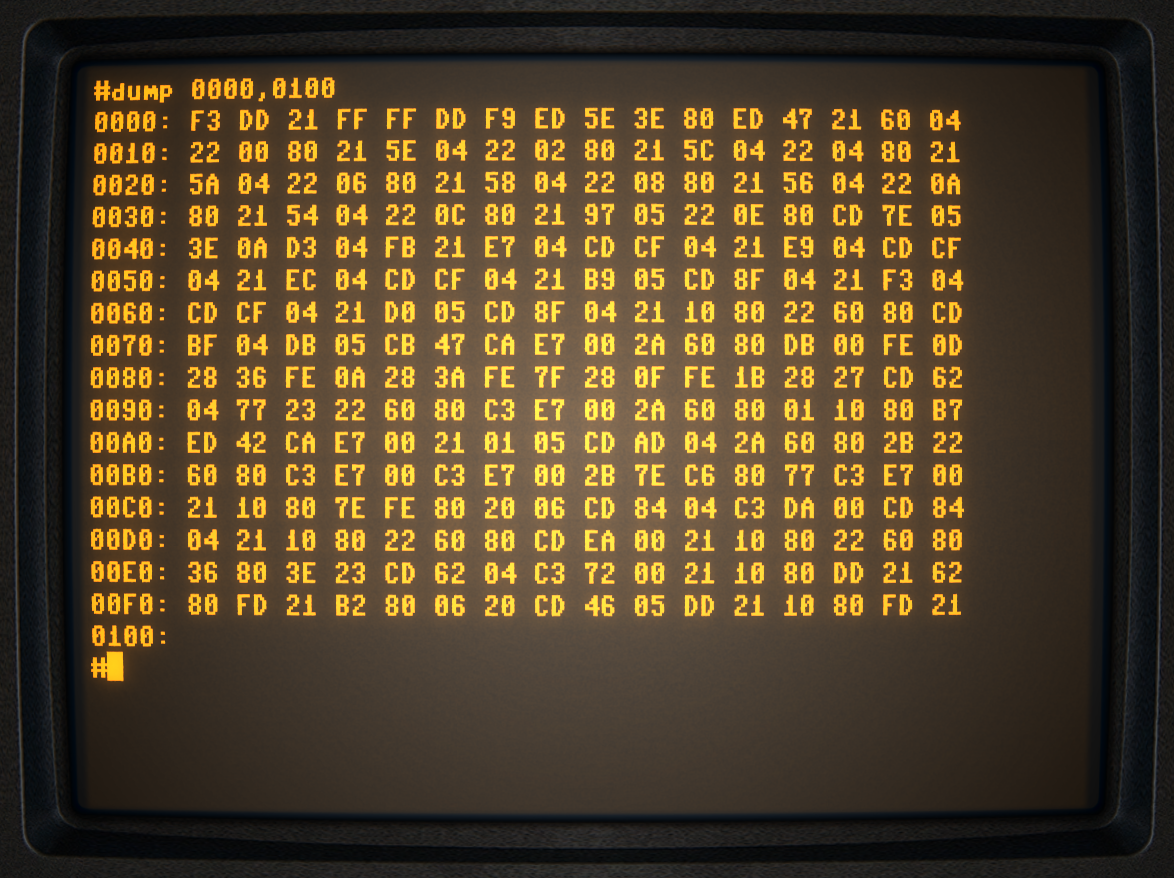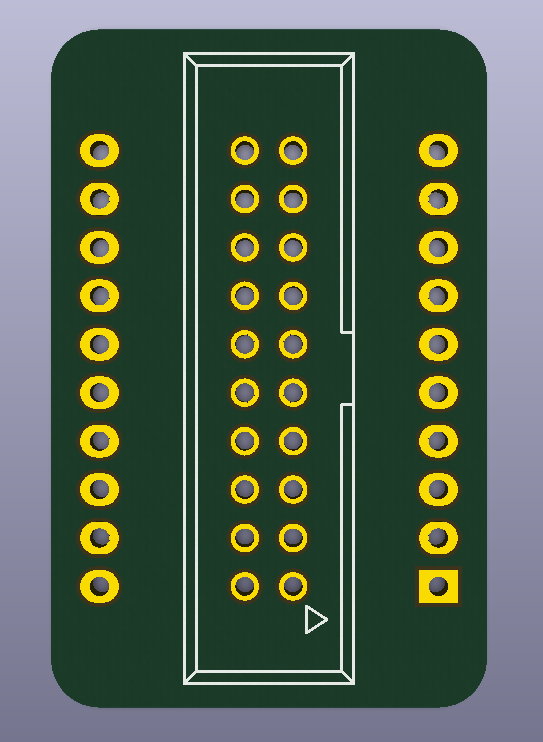-
First C program for the Messy80
03/21/2018 at 23:42 • 0 commentsI just got SDCC to compile a Hello World program for the Messy80. Writing a putchar function to get printf working was a little more tricky than I thought. I had to have a look at the list file produced by SDCC to figure out how to get the function parameter.
#include <stdio.h> #define UART_LINE_STATUS 0x05 #define UART_LINE_STATUS_THRE 0x05 #define UART_TX_BUFF 0x00 /** putchar (char c) Needed for printf */ void putchar (char c) { __asm _wait_tx_ready: // Wait until uart is ready to send IN A,(UART_LINE_STATUS) bit UART_LINE_STATUS_THRE,A jr Z,_wait_tx_ready // Get the parameter (char c) from the stack // There must be a better way of doing this // This is insane :[ pop DE dec sp // Looks like SDCC saves some space by using inc // when pushing 8bit values onto the stack pop AF // Put everything back the way it was. push AF inc sp push DE out (UART_TX_BUFF),A // At long last, send the byte __endasm; } void main(void) { putchar(':'); putchar(')'); putchar('\r'); putchar('\n'); printf("Hello world!\r\n"); }
One thing is for sure, now that the C compiler is set up. writing C programs feels like cheating in comparison to using assembler.Edit:
I really should have read the SDCC manual a little more. There is a section called "Z80/Z180 intrinsic named address spaces" that explains how write to input/output registers.
This is what the new putchar function looks like.
#define UART_LINE_STATUS_THRE 0x05 __sfr __at 0x00 UART_TX_BUFF; __sfr __at 0x05 UART_LINE_STATUS; void putchar (char c) { while( (UART_LINE_STATUS & (1 << UART_LINE_STATUS_THRE)) == 0 ); UART_TX_BUFF = c; }Having a look at the list file is also quite enlightening as to how the function can be implemented in assembler
_putchar:: 00101$: in a,(_UART_LINE_STATUS) and a, #0x20 jr Z,00101$ ld hl, #2+0 add hl, sp ld a, (hl) out (_UART_TX_BUFF),a retMuch nicer than what I've done above.
-
Just added a dump command to the messymonitor
03/20/2018 at 10:04 • 0 comments![]()
-
Writing and loading programs for the Messy80
03/19/2018 at 10:29 • 0 commentsThis will be a description of the steps taken to write and run programs.
1. Program is written in assembler starting at address 0x8400
; ---------------------------------------------------------------------; ; Print out Hello World!!! ; ; ---------------------------------------------------------------------; #include "labels.ass" #target rom ; declare target file format #code $8400,$4000 ; declare main code segment hello_world: ld HL, str_hello_world call print_string call new_line ret str_hello_world defm "Hello World!"+$80 #end2. Before assembling the program a script gets the symbols used in the monitor so that routines such as 'print_string' can be used. The symbols are saved into labels.ass
zasm conveniently can produces a log file with all the symbols defined.
3. The program is assembled with zasm.
4. Yet another script is called that reads the bin file and outputs commands for the monitor that will write the program to the RAM. The commands saved into a text file.
This is what it looks like:
wa 8400,21 wa 8401,0A wa 8402,84 wa 8403,CD wa 8404,E8 wa 8405,03 wa 8406,CD wa 8407,BF wa 8408,03 wa 8409,C9 wa 840A,48 wa 840B,65 wa 840C,6C wa 840D,6C wa 840E,6F wa 840F,20 wa 8410,57 wa 8411,6F wa 8412,72 wa 8413,6C wa 8414,64 wa 8415,A1
5. 'Picocom' and 'ascii-xfr' are used to send the commands to the monitor.
6. Finally address 0x8400 is called.
This is the result in the serial monitor:
# *** file: -s -l 10 /home/oliver/workspace/z80/messy80/programs/hello_world/hello_world.txt $ ascii-xfr -s -l 10 /home/oliver/workspace/z80/messy80/programs/hello_world/hello_world.txt ASCII upload of "/home/oliver/workspace/z80/messy80/programs/hello_world/hello_world.txt" Line delay: 10 ms, character delay 0 ms wa 8400,21 #wa 8401,0A #wa 8402,84 #wa 8403,CD #wa 8404,F8 #wa 8405,03 #wa 8406,CD #wa 8407,CF #wa 8408,03 #wa 8409,C9 #wa 840A,48 #wa 840B,65 #wa 840C,6C #wa 840D,6C #wa 840E,6F #wa 840F,20 #wa 8410,57 #wa 8411,6F #wa 8412,72 #wa 8413,6C #wa 8414,64 #wa 8415,A1 # *** exit status: 0 #ca 8400 Hello World! Successfuly returned #
-
Experiences ordering PCBs
03/15/2018 at 01:09 • 0 commentsThe Messy80 is just the second printed circuit board I have ever ordered. I got it from JLCPCB. When I received it the silkscreen was missing. As I ordered it I tried to follow their instruction as well as I could. What is interesting is that JLCPCBs online preview did show the silkscreen.
I have decided that before ordering the second revision of the Messy80 I will order a smaller board first, so I made a small adapter so that I can easily connect the Messy80 with ribbon cable to a breadboard.
![]()
I have renamed the gerbers so that they follow the suggested naming patterns here:
https://support.jlcpcb.com/article/29-suggested-naming-patternsOnly the future will tell whether the silkscreen will show up this time.
 Oliver.D
Oliver.D
